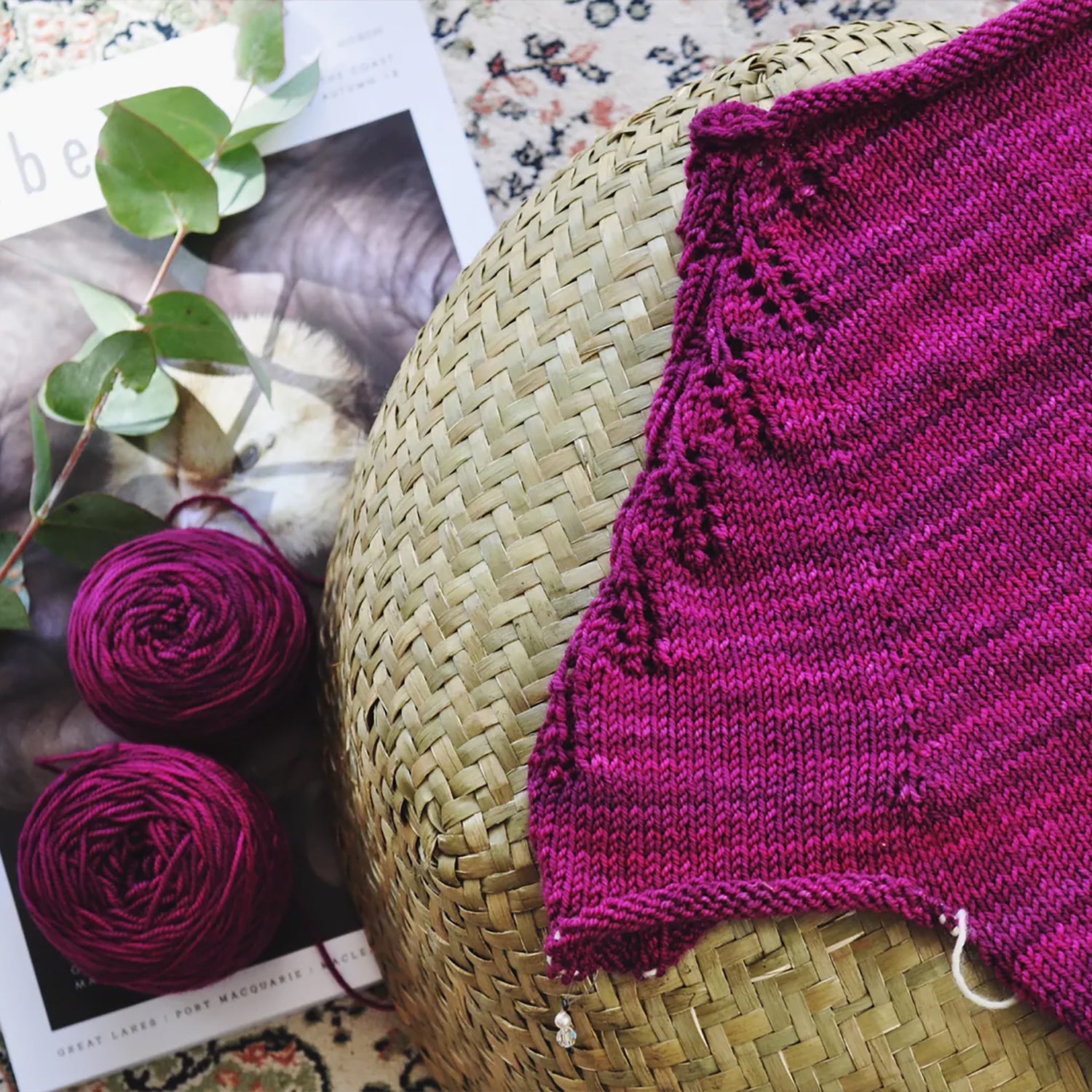
Should I Alternate Skeins? Yes, And Here's Why...
Knitting with hand-dyed yarn is such a pleasurable, visual experience. Hand-dyed colours are complex and the fabric they create displays a wonderful depth of colour that can't be matched by commercial yarn. However, when choosing to knit larger projects using hand-dyed yarns without alternating skeins, you may be a little less than impressed with your finished object. And by 'larger' projects I'm referring to sweaters and cardigans or projects that require more than one skein of the same colour. Truth is, knitting these types of projects using hand-dyed yarns takes much more work than its commercial counterpart, but the end results are stunning and well worth the extra effort. Today we will be looking at the technique of alternating skeins when working on larger projects and why, when it comes to hand-dyed yarn, it is so important. I'll also be adding links to some video tutorials at the end on how to alternate skeins when working in the round and when working flat.
Colour Blocking
Colour variation within a dye lot is a very normal occurrence in hand-dyed yarn. There are various reasons why colour variations occur: fluctuations in temperature, water level, dye and mordant amounts to name but a few. Sometimes these colour variations are obvious. For example, one or two skeins might be a lot lighter or darker than the others. However, there are times when these variations won't be visible until after you have started knitting with a new skein. Unintentional colour blocking is the term used to describe this kind of knitting dilemma, where one skein is either lighter or darker than the rest, which results in a colour-blocking effect. I learnt the hard way (see the pic below), and ever since I alternate skeins ALL the time.

You can see that the bottom section of the cardigan is lighter and more purple than the rest of the garment. If I had alternated skeins, the variation in colour wouldn't be noticeable. Alternating skeins solves the problem of unintentional colour blocking by ensuring an even distribution of colour and a much nicer finished piece (and happier knitter!).
Mismatched Dye Lots
Because hand-dyed yarns are dyed in very small batches, you might find yourself in the predicament of having to buy mismatched skeins, whether it's because you've run out of yarn and need to order more, or the only skeins left to buy at your LYS are from different dye lots. Most dyers don't bother with dye lots because, as mentioned, our batch sizes are so small. This means it's impossible to tell whether yarns come from the same batch, so alternating skeins becomes very important to ensure your yarns blend together nicely and will hide any dye-lot issues.

Variegated Yarns and Pooling
Colour pooling can be a problem when working with variegated yarns. Importantly, however, not all variegated yarns pool. It all depends on whether the colour repeats are long, short or random (but that's another blog post!). Pooling occurs when a colour that is repeated regularly in a colourway, knits up in the same area row after row, causing the colour to pool. Sometimes pooling is desirable (see picture below): it looks particularly nice on socks, but when you are not expecting it, not so nice on a sweater.

By simply alternating skeins, you are shifting the order of colours around so that the same colours won't fall on top of themselves row after row. This will ensure an even balance of colour throughout your project and will prevent pooling.
Check out our recent blog post with video tutorials on how to alternate skeins.
Of course, there are lots of people who don't mind pooling or colour blocking and that is totally fine. But those who are new to hand-dyed yarns need to be aware of their quirks and learn the best way to manage them. Yes, it is a bit more work but, honestly, after years of alternating skeins it has just become second nature.
Happy Knitting!
xxoo


Leave a comment